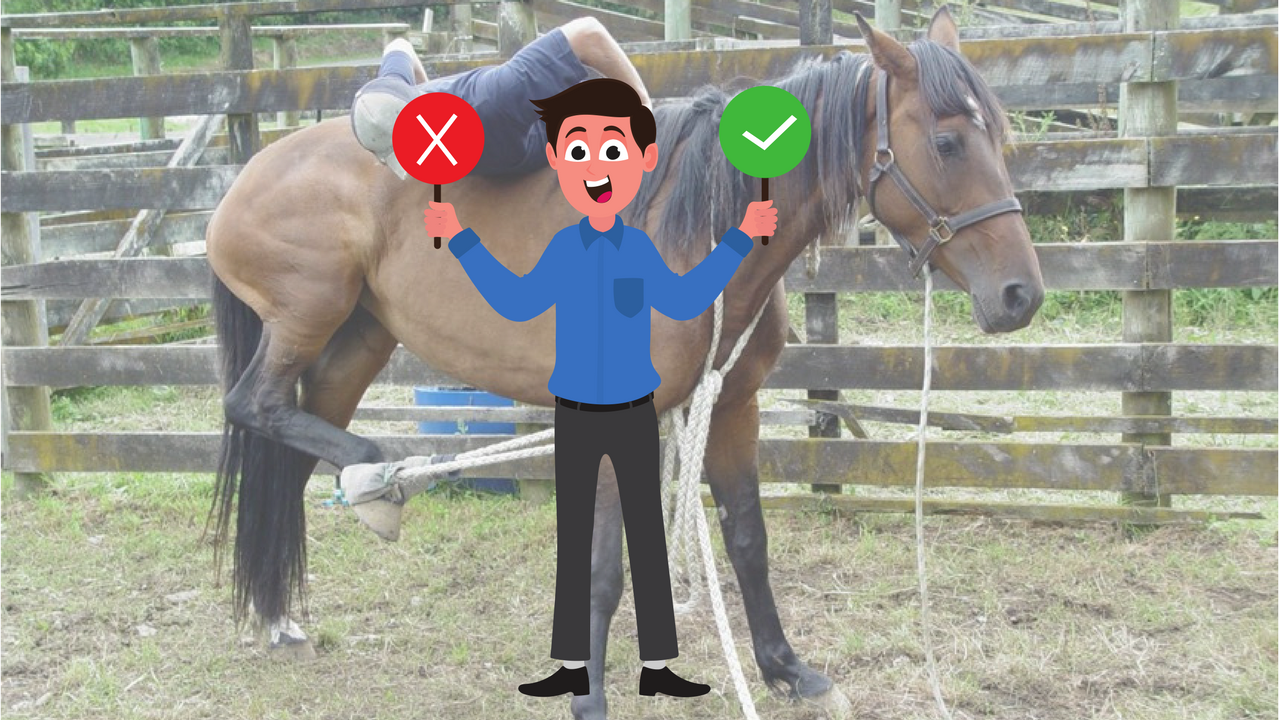
It's easy to say 'make sure your training method fits the International Society for Equitation Science (ISES) Training Principles' but it often seems complicated, especially when we haven't evaluated methods in this way before. During the following several posts, I'm going to walk you through the principles as they apply to different training methods. I'll choose two lessons for each principle and we will see how some methods fit and others don't.
Sometimes it's more obvious that a method is inappropriate, let's use the example of hobbling a horse with a back leg off the ground to make it stand still for mounting. I use this example because just the other day I saw it being used by a trainer with a photograph on Facebook.
In such cases I simply ask myself the three basic questions:
- Can I get hurt doing this?
- Can the horse get hurt doing this?
- Is the horse likely to be able to complete the lesson in a relaxed and stress-free way?
Clearly, the answer is a resounding NO to each of these questions. An easy decision. If you're still unsure after asking those three questions, ask yourself if you'd do the same thing (chasing around a round pen, leaving confined and alone for hours) to a child. Again, if the answer is NO then you should avoid that method.
Give me an example of a lesson that was a clear NO to all of the questions above? Just leave a comment below.
I suggest you pop along to the ISES site and read the principles here. There are ten in total and this link goes into detail for you as well as providing an excellent explanation of the various types of reinforcement, punishment and desensitisation techniques. You can also download a copy of the Training Principle Poster here and that will give you a brief overview.
While you're on the ISES website, have a look around, you'll find all sorts of interesting things!

